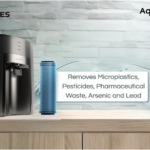role in addressing the limitations of control towers in supply chain management. While supply chain control towers enhance visibility, they often lack the ability to provide comprehensive insights on liquidation or prevention of overstocking or understocking issues. However, AI and ML-driven solutions can offer valuable suggestions and recommendations in plain language, enabling businesses to mitigate such situations effectively or even capitalize on opportunities arising from overstocking.
What Is a Supply Chain Control Tower?
A supply chain control tower is an advanced solution hosted on the cloud that leverages state-of-the-art technologies like IoT, machine learning, and AI to actively oversee and manage supply chains. In its conventional sense, it involves a customized and interconnected interface that presents data, essential business metrics, and supply chain activities. This empowers companies to efficiently detect, classify, and promptly resolve pressing concerns as they occur.
Supply chain executives face immense pressure to fulfill customers’ expectations regarding timing, location, operational efficiency, and cost reduction. This task becomes particularly challenging when unforeseen risks and disruptions occur, which are unavoidable.
Why Are Inventory Control Towers Important?
A supply chain control tower strengthens the resilience of an organization’s supply chain by offering comprehensive visibility, decision support, and swift corrective actions. An effective supply chain enhances the ability to mitigate the impact of disruptions and enables speedy recovery. The advantages of implementing a supply chain control tower include:
Accurate Forecasting and Decision-Making: Predictive analytics has the capability to integrate, enrich, and consolidate data, leading to enhanced decision-making and automated self-correction. This, in turn, improves operational efficiency and minimizes waste.
End-to-end Supply Chain Visibility: By proactively managing their supply chains, companies can effectively minimize risks and costs. This is accomplished by attaining comprehensive visibility across the entire supply chain, which includes suppliers, manufacturers, transporters, warehouses, and third-party logistics (3PLs) providers.
Enhanced Supply Chain Agility: Having agility in the supply chain enables prompt adaptations when unforeseen events arise, leading to enhanced customer experiences, quicker response times, and overall improved supply chain efficiency.
Accurate Inventory Levels: Supply chain control towers offer businesses comprehensive visibility into inventory levels across their entire network, enabling them to ensure the timely availability of required items at the right locations. This leads to efficient inventory planning, ultimately improving sales and profits by minimizing stock-outs, material shortages, and excess inventory.
Better Supply Chain Collaboration: A connected supply chain system that links partners, suppliers, and logistics service providers fosters collaboration across different organizations. Facilitating direct communication with partners enables swift issue resolution, cost reduction, improved customer satisfaction, and enhanced partner and talent retention.
How Are Supply Chain Control Towers Helpful in Inventory Planning?
Purchase Planning: It empowers organizations to optimize their procurement process by accurately predicting the ideal timing and quantities for placing orders. By analyzing historical demand data and market trends, this module can forecast future demand, enabling organizations to procure the appropriate inventory at the most opportune moment.
Replenishment Planning: It allows organizations to generate transfer orders automatically, using predefined reorder points and safety stock levels. This module leverages real-time inventory data to generate replenishment orders, ensuring that inventory levels are maintained at an optimal level and minimizing the risk of stockouts.
Inventory Rebalancing: The inventory rebalancing functionality assists supply chain teams in optimizing inventory levels across multiple warehouses or distribution centers. By analyzing inventory data from all locations, the module provides recommendations for inventory transfers to rebalance levels and minimize excess inventory holding costs. Additionally, with an AI-based approach, liquidation planning can be utilized to efficiently unlock working capital. This solution allows users to determine an optimal price considering price elasticity for specific SKUs and create liquidation plans.
Stockout Prediction: Utilizing AI algorithms, the stockout prediction module forecasts the probability of stockouts by analyzing historical demand data, market trends, and other factors affecting demand. This proactive prediction enables organizations to take corrective measures in advance, preventing stockouts and ensuring the timely availability of the required products.
Inventory Pile-Up Prediction: The inventory pile-up prediction functionality utilizes historical demand data, market trends, and other influential factors to forecast the probability of excess inventory pile-up. By proactively predicting such situations, supply chain teams can take corrective measures to prevent inventory pile-up and minimize excess inventory holding costs.
By harnessing these capabilities, organizations can optimize their inventory levels, decrease inventory holding costs, and ensure timely availability of the right products. AI-driven inventory control towers empower supply chain teams to automate and streamline inventory management processes, allowing resources to be allocated towards strategic initiatives. The centralized hub provided by inventory control towers also enhances collaboration across various departments within the organization, facilitating well-informed decision-making and optimizing overall supply chain operations.
About the Company
Fountain9 has developed an AI-powered inventory planning solution called Kronoscope, which offers an intelligent supply chain control tower. Kronoscope empowers businesses to proactively prevent overstocking by identifying SKUs at risk of accumulating throughout the supply chain. By monitoring inventory pile-ups, Kronoscope identifies SKUs suitable for liquidation, minimizing wasted procurement and replenishment efforts, unnecessary expenses, and opportunity costs. Additionally, it offers natural language recommendations on liquidating overstocked products at the right price or selling them, mitigating significant losses. This solution aids in retaining organizational knowledge and expediting decision-making processes.
Kronoscope enhances resilience, exception management, and responsiveness to unforeseen circumstances, enabling businesses to meet customer expectations and drive increased revenue.













